Search for the term ‘sensory bin,’ and you’ll find many, many ideas to keep infants and toddlers busy.
Many require a fair amount of advanced planning and a crafty supply kit… but what if you had everything you needed to create a sensory bin, right at your fingertips?
“My 11-month old seemed so bored with his toys, but I started watching the kinds of things he gravitated toward, and realized we could play little games using things around the house.
I also started offering him choices, and realized that not only was this a nice way to involve him in creating a game, but it allowed him a nice sense of power and, in a way, self-confidence.
When we put new things together (like sunglasses on a teddy bear), he became completely fascinated, and it really held his interest!”
Imagine two different scenarios:
In the first, you place a toy in front of your baby that lights up and makes music. Perhaps you model to your baby that when she presses the button, some kind of action will take place – the lights flash, the car moves, the button sings a song or a character talks.
In the second, you place a toy in front of your baby that simply sits there. It might make noise when it shakes or is turned upside down, but your baby has to do something to it, explore it herself, figure out what it might do and what its purpose might be.
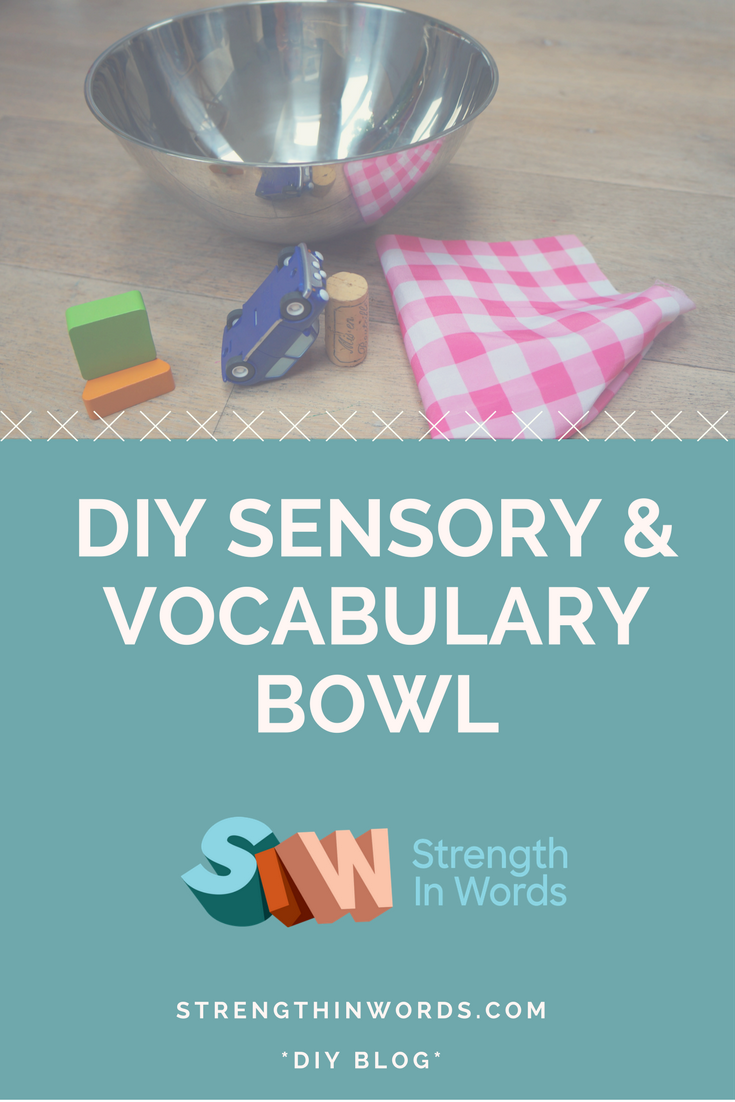
Each type of play material is valuable. Each has its own function. But which is more likely to allow for the following:
- Flexibility
- Interaction
- Problem-solving
- Creative thinking
And which is useful for teaching:
- Cause & effect
Open-ended materials, like the ones we discussed in the corresponding podcast episode, (Open-Ended Play), can be used in many different ways, and for so many different purposes.
Your infant might play with the same tissue paper as your toddler, but their play looks completely different.
Young children learn by exploring with their senses – touching, looking, listening, tasting, smelling… so what better way to spend a few minutes of play than with a “sensory bowl,” in which you can curate a sensory exploration for your little one, and expose her to lots of vocabulary in a natural play activity!
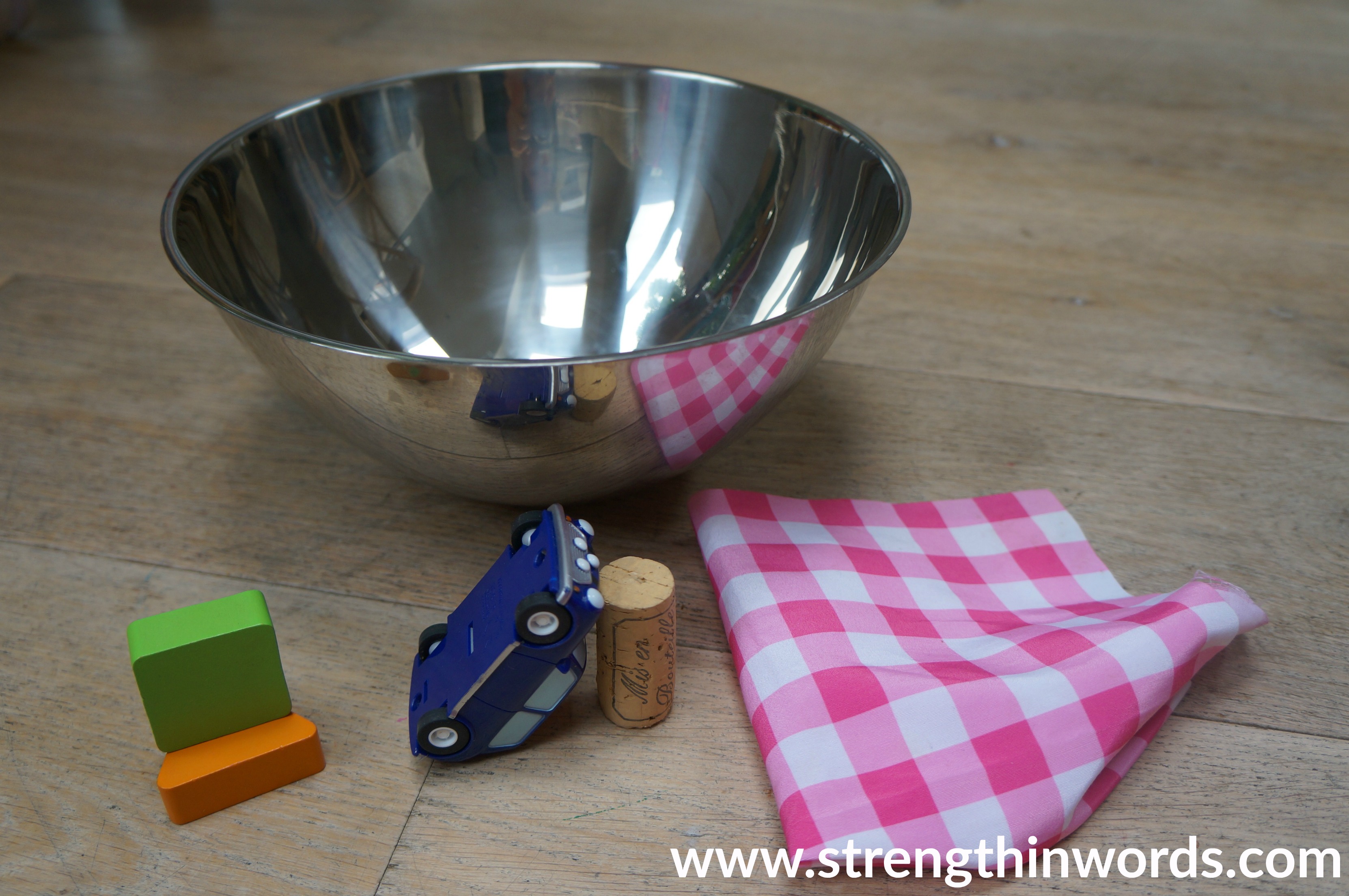
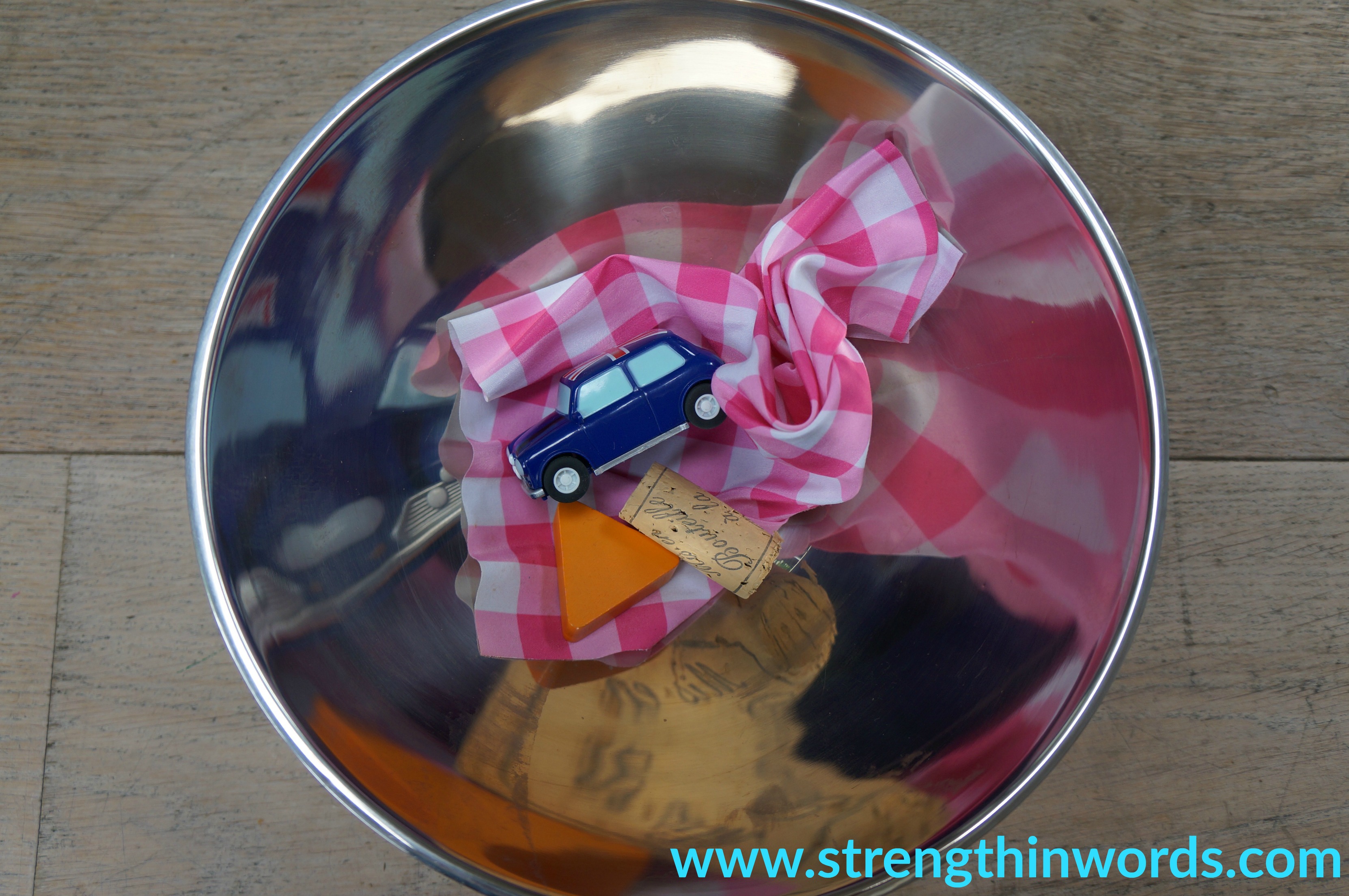
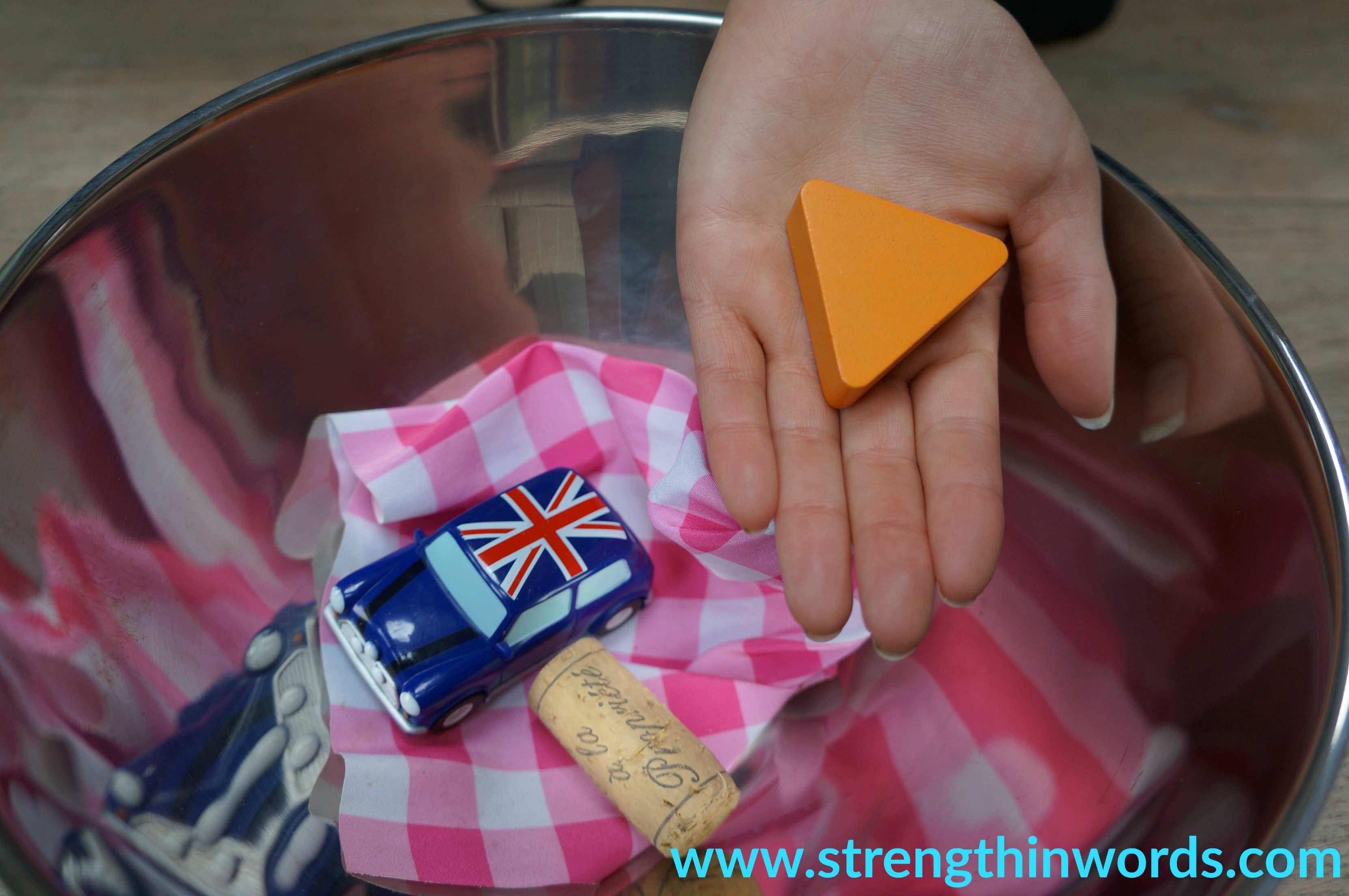
Don't Miss our Corresponding Podcast Episode!
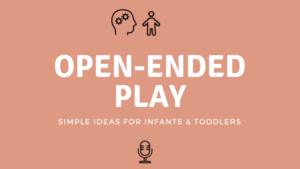
Materials to create your DIY sensory & vocabulary bowl:
- Mixing bowl
- An assortment of baby-safe items in your home for your little one to explore while you supervise. You might consider the following
- Soft / hard things
- Cold / warm things
- Things that can move
- Various shapes
- Various colors
Instructions to create your DIY sensory & vocabulary bowl:
- Place a few items in the bowl – up to 5 at a time
- Ask your baby to choose an object – respond to her gaze, reach, touch, grab, point, vocalization
- While your baby explores the object, talk about:
- What she’s doing
- What she might do
- What you or others do with that object
- What it looks like (attributes of the object)
- Put your description to song, as we did in the corresponding podcast episode! This may enhance her enjoyment of the activity or keep her attention for a longer period!
Ages
- From the age of 3-4 months, typically-developing infants develop “binocular vision,” and can see often further away than the previous ~12 inches. Around the same time, an infant’s fine motor control for swatting and grasping is also emerging. Therefore, if you place two objects close to your young infant, she may reach towards one, effectively making a choice between the two.
- Sensory bowls / bins / baskets / trays are a wonderful way to introduce new materials to your infant or toddler, or objects that you wouldn’t traditionally put together.
- Consider grouping the objects by category (i.e., color, texture, function) or by activity (i.e., dressing, feeding, washing stuffed animals or dolls)
This post contains affiliate links. All activities described by Learn With Less assume close supervision of the child by an adult.
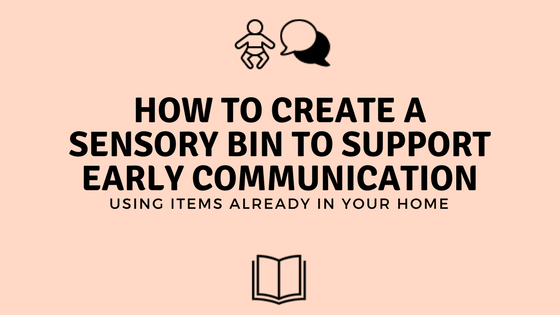
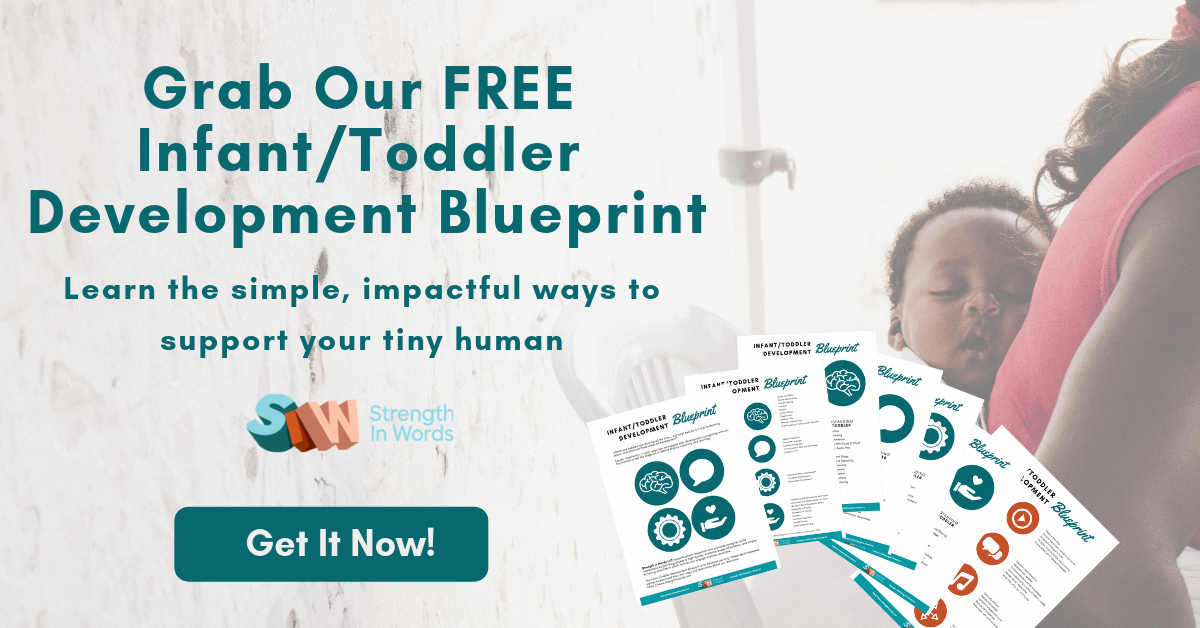
I am a big fan of sensory type baskets like this. As they get older it is great for talking about things like weight, texture etc and as you note, developing their vocab x
toddlerapprovedtuesday
Yes! And let’s not forget that ALL these concepts are developing both cognitive (concepts, comparisons) AND communicative skills (vocabulary, narrating) simultaneously! I love them, too – so easy to create something "out of nothing" (i.e., a bunch of random stuff from your home), and sometimes helps us as adults think more creatively, as well!!
Thanks for reading!
I can’t wait to try this with my 18 month old! She is now excited about repeating words I say and loves one on one time with me. Great post! Sondra from tangerinesandtickles.com
Sondra, so happy to hear it! Let me know how it goes!
I do this with children starting to learn letters sounds so 3 – 4 year olds but never thought to do it with babies, I’m definitely going to now. Thanks for sharing on #ToddlerApprovedTuesday
Fun!! I would love if you will let me know how it goes! I love thinking about how I can adapt activities to different age groups and developmental stages 🙂